In the world of visual storytelling, Stable Diffusion prompt templates are essential tools for crafting engaging and unforgettable images.
But as many users of Stable Diffusion, finding the perfect prompt format can be a challenge as there are a lot of templates on the internet.
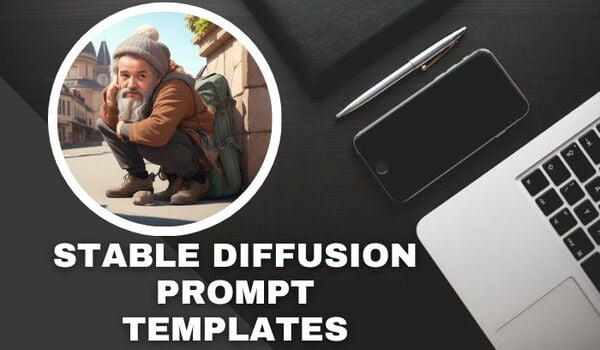
That’s why I am sharing tips to create Stable Diffusion prompt format with my own templates to kickstart your creativity, including Negative Prompt Templates.
No need to be a tech expert, we’ll keep things easy and enjoyable.
Best Stable Diffusion Prompt Templates
Here, I am primarily using Stable Diffusion v1.5, Stable Diffusion v2.1, DreamShaper, Deliberate, and SDXL to test the templates.
And our templates are thoughtfully categorized to suit a wide range of projects, offering everything from polished vectors to evocative monochromes.
To use the templates, simply replace my words within [ ] with your own.
Vector Illustration:
Vector illustration is characterized by its crisp, seamless lines and exact mathematical accuracy.
It brings vitality to shapes, lines, and colors, all without the limitations of pixelation. From straightforward geometric designs to intricate artwork, the potential is limitless.
Now, let’s explore the template.
[An ethereal forest glade, dappled sunlight filters through ancient trees, and a sense of tranquility pervades,] illustration, vector illustration, retro, vintage, everything in sharp focus, HDR, UHD, 64K
Monochrome Art:
It refers to artistic creations using only one hue or shade, exploring its various tones, shades, and saturations.
Actually, this technique emphasizes the visual impact of a single color, allowing for nuanced expression and evoking powerful emotions within a limited palette.
Prompt Template:
A sketch of [the joker] with traditional ink, line sketch, intricate, elegant, highly detailed, monochrome, concept art, [front face], high contrast [black and white]
Nature and Landscapes:
Nature and landscape images connect us to the Earth and its wonders to bring peace and joy. And they’re really calming and inspiring, right?
Prompt Template:
[A mystical fairy colorful forest, in the style of Brian Kesinger], Landscaping Technology, by [John Berkey], dark cyan and blue, village core, wood, 8k, detailed, intricate, realistic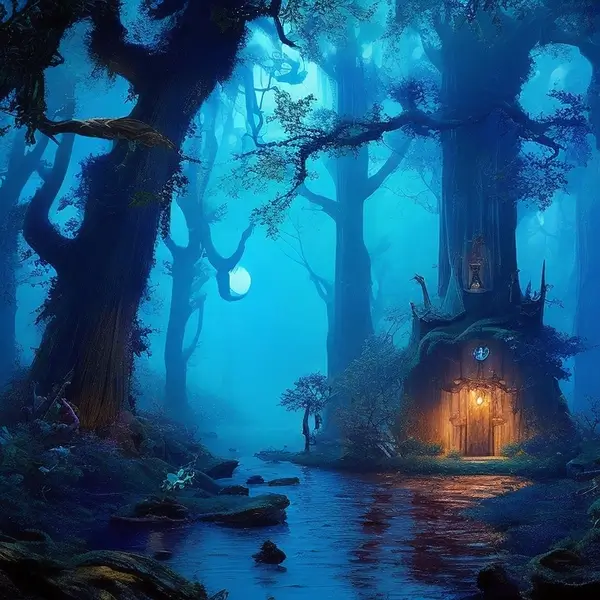
Animals and Wildlife:
We always adore animals and wildlife images because they’re captivating and heartwarming.
So, let’s showcase the beauty of nature’s creatures and bring a sense of wonder with the following template.
Prompt Template:
Create a photo of [a black panther], Full body, 256K, anatomically correct body, head and limbs, high-detailed, ears, canines, and incisive, highly detailed symmetric eyes, f8 lens 85mm, Canon, focus sharp, balance, clarity, harmony.
Fantasy and Science Fiction:
If you want to create fantasy and sci-fi images that take you on thrilling adventures in your mind to spark creativity and imagination.
These images show worlds beyond your own, full of magic or futuristic marvels.
Prompt Template:
[Viking woman, small smile, red hair, cornrow braids, blue eyes, unreal engine], 8k octane, 3D lighting, full body, full armor, var-cinematic-fx, var-lens-type, var-lighting-source, var-photo film-color, science fiction hard science fiction.
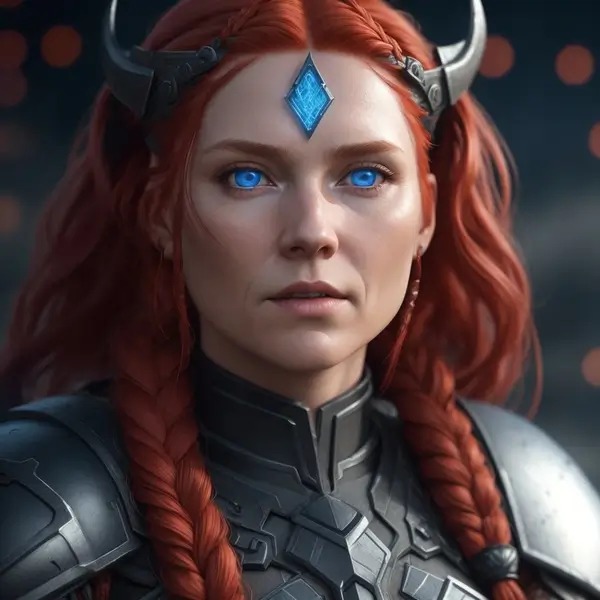
Now let’s explore a different way to write and design a prompt template for digital art.
Digital Art:
General Prompt Template:
{Art style} {Subject} {Scene} {Composition} {Lighting} {Other details}You can say the template all in one for digital art because it can be used to generate a prompt for a variety of digital art styles, subjects, scenes, compositions, lighting, and other details.
For example, if you want to generate a digital art image of a cat in a realistic style, you could use the following prompt:
Digital art of a realistic cat sitting on a windowsill in the morning light.
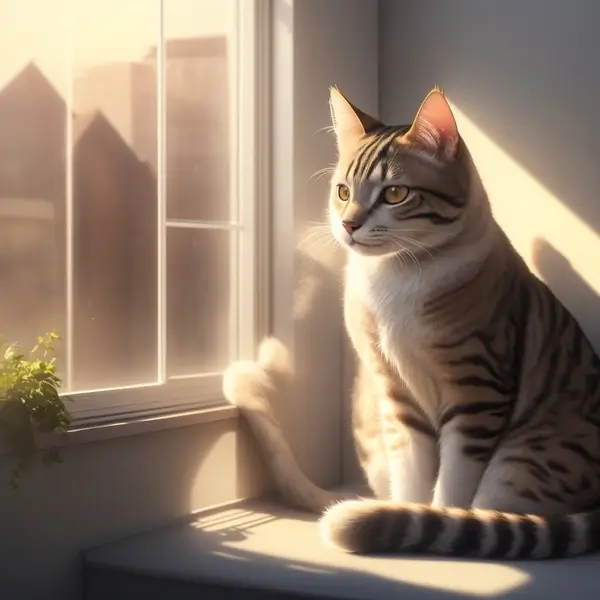
Or if you want to generate a digital art image of a cyberpunk city in a futuristic style, you could use the following prompt:
Digital art, Futuristic cyberpunk city with neon lights and flying cars.
So, do you get the point?
You just follow the pattern mentioned in the template.
Now, let’s create more complex prompts using the pattern, the prompt that includes specific details about the subject, scene, composition, or lighting.
For example, if I want to generate a digital art image of a cat sitting on a windowsill in the morning light, with a close-up of its face and fur, I could use the template to create the following prompt:
Realistic close-up portrait of a cat sitting on a windowsill in the morning light, with its fur illuminated by the sunlight.
So, what do you think is not the universal prompt for digital art?
I hope it may be.
Portraits and Characters:
We know these types of images aim to depict a real or fictitious character, either in a realistic or stylized manner, often with specific characteristics or settings.
Template:
A breathtaking portrait of [Ewa Reis's] beautiful face, and highly detailed eyes, as drawn by Bernie Wrightson, Andreas Rocha style, lush, romance comic book art, 8k
So, to achieve a realistic vibe, you should include the character’s name and the person or inspiration it is based on in the prompt.
Architectural Designs:
Want to inspire yourself to imagine new homes, cities, and spaces?
This template can emphasize the harmony between your creations and the environment, influencing how you live and interact with your surroundings.
Template:
[an extremely far away exterior shot of a pavilion-like modern house designed by Marcio Kogan], Balinese architecture, volumetric lighting, high detail, 14mm, glass railing, outdoor staircase, terraces, roof garden, cinematic photography, CG architects, high resolution, 8 k resolution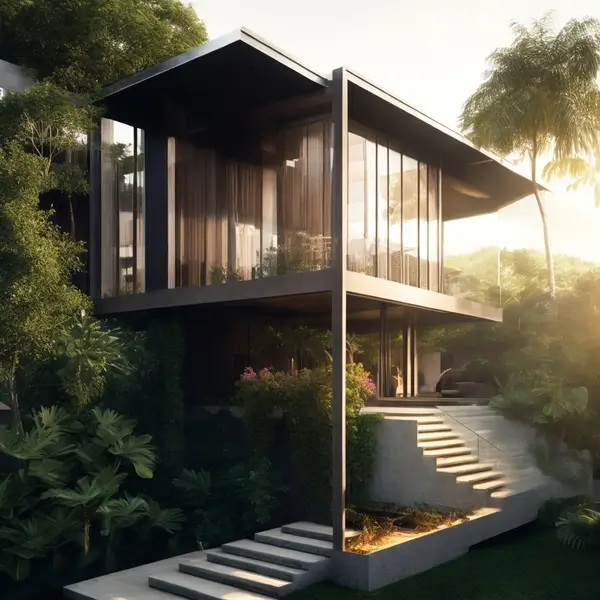
Transportation:
To create prompts for images of vehicles like cars, planes, ships, or futuristic modes of transportation, below is your template:
[Audi SQ5], high quality, wildlife, f 1.8, soft focus, 8k, IAP 2023 Award-winning photograph by Andi Rusyn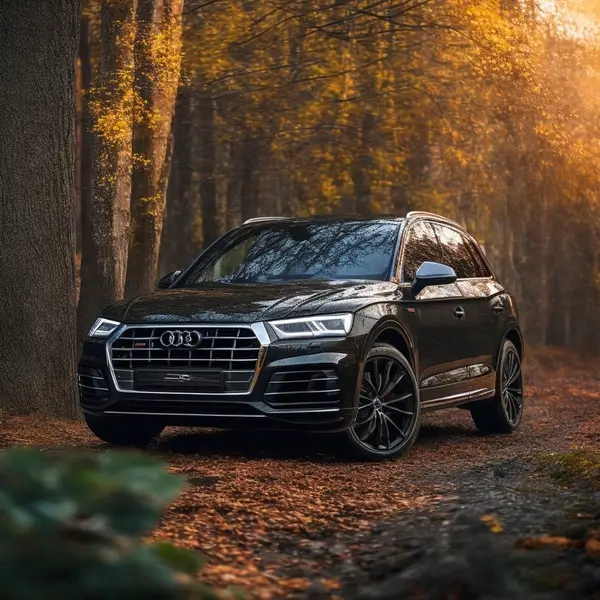
Food and Cuisine:
Sometimes, we need imaginary dishes to surprise friends and elicit a laugh with a faux lunch or dinner.
So, let’s attempt to astonish someone who is particularly fond of indulging with an array of dishes, ingredients, or culinary scenes.
Template:
An Orginal [Burger], detailed photograph by a cannon camera, sharp focus, proper shape, realistic, 8k, HD, very high quality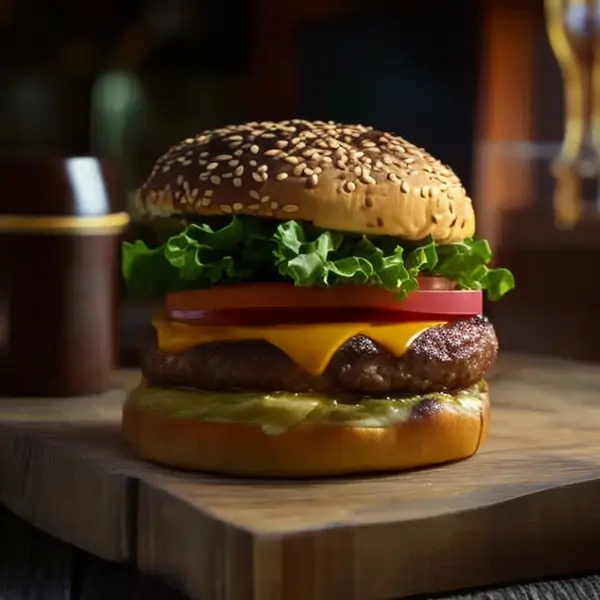
Anime Template:
Create An Anime, [girl, smiling and blushing Face], Pure dark black extra-size [half]-frame glasses, film, created by An anime animator, 4k, highly detailed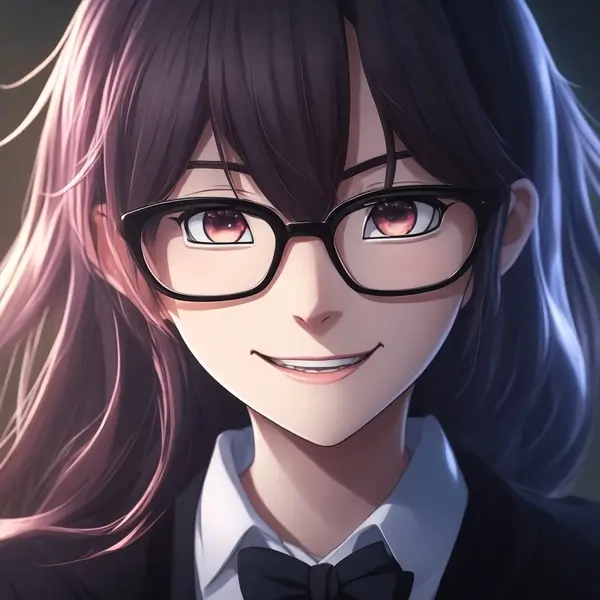
Fashion Template:
Cinematic photo of a fashion model, [woman], wavy blonde heavy, [blue blouse with lace], a very detailed face. White background, professional designer outfit, hyper-realistic, 8k, 4k, highly detailed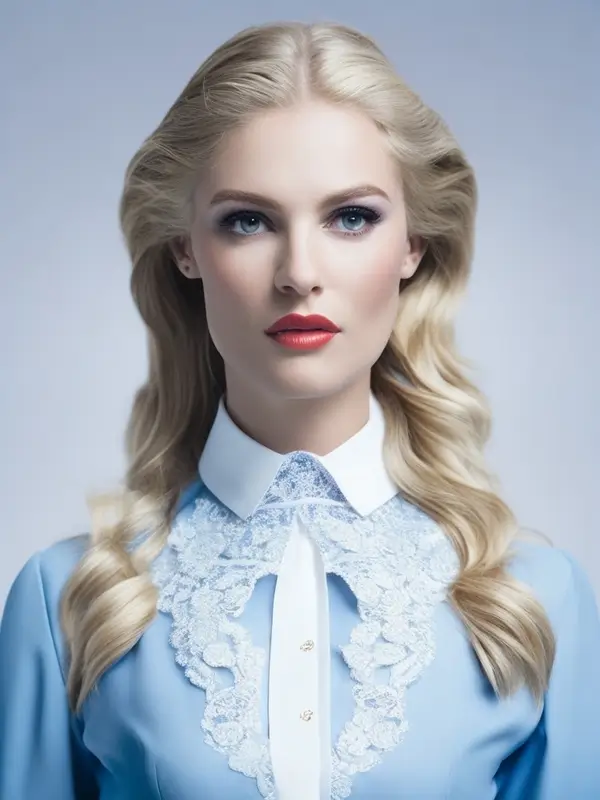
I hope you love the templates, but I know there are a lot of categories that I do not cover here.
But do not worry;
I am giving you tips to create a proper prompt format as well as a template that you can use to create your own.
Tips to Create Stable Diffusion Prompt Format
In short, an ideal prompt format should follow the below pattern:
Perspective, Lighting, Color, Media Type, Background, Photography type, Framing, Mood, Time Of Day, Creation type
Now, if we want to add all elements in our prompt then it will be like below:
A woman in a natural pose against a sunlit garden. Soft lighting, a warm color palette, and a naturalistic style. Sunlight on her hair and clothing texture. A positive, self-assured expression. Lifestyle magazine cover, focuses on depicting a modern, confident woman in a harmonious natural setting.
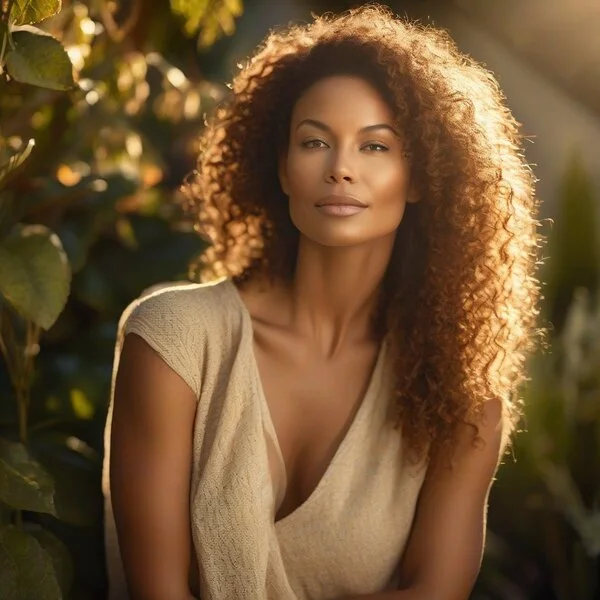
But you can see the image is not as good as I want; that’s why we need to understand all the elements and try to add what needs to be added.
So, let’s see how you can incorporate each of the mentioned elements.
- Perspective: First, specify the viewpoint or angle from which the scene should be depicted.
For example, “Capture the scene from a bird’s-eye view” or “Create a close-up perspective focusing on details.”
You may read our guide on stable diffusion perspective prompt and camera prompt for a detailed guide.
- Lighting: Describe the desired lighting conditions, such as “Use soft, warm lighting to create a cozy atmosphere” or “Emphasize dramatic shadows with directional lighting.”
But if you know the techniques, you can also control lighting in stable diffusion in a better way.
- Color: Now, provide color guidelines, including specific colors or color schemes.
For instance, “Incorporate vibrant, contrasting colors” or “Keep the palette muted with pastel tones.”
- Media Type: Specify the medium or style you want the image to resemble, such as “Render the image in an oil painting style”.
For this, you can use the SDXL styles selector.
- Background: Detail the background elements, whether it’s a specific setting or environment.
For example, “Place the subject in a bustling urban street” or “Create a serene nature background.”
- Photography Type: Indicate the style of photography you want the AI to emulate.
To do that, you can include words like Film photography, 35mm, f/1.4 Aperture, Sigma lens, 120mm film, Lifestyle photography, 27mm, Studio product photography, etc.
- Framing: Define how the subject should be framed within the image.
For example, “Use a wide-angle lens for a panoramic view” or “Focus on a tight frame to highlight facial expressions.”
- Mood: Convey the emotional tone you want the image to evoke.
For instance, “Create a whimsical and playful mood” or “Evoke a sense of mystery and suspense.”
- Time Of Day: Specify the time of day for the scene, influencing the lighting and mood.
For example, “Capture the warm glow of sunset” or “Depict a scene in the soft light of dawn.”
If you light words before then you can ignore it.
- Creation Type: lastly, define the overall style or purpose of the image, such as “Design an illustration for a book cover” or “Generate a concept art piece for a fantasy setting.”
So, add the elements as you desire.
Now let’s see what should be the negative prompt template for stable diffusion.
Stable Diffusion Negative Prompt Templates
In this post, I am providing a comprehensive template for negative prompts because, as you know, like positive prompts, negative prompts also vary by category.
For example, if we aim to generate an image of an animal or human, we should employ the following negative prompts.
two-person, blurred, cartoon, cropped, broken legs censor, big head, long beard, pointed footwear, fused fingers
I hope you understand my words.
So, let’s take a look at a basic negative prompt template.
Negative Prompt Template:
blurred, cropped, poorly drawn face, bad shadow, bad anatomy, disappearing thigh, extra digit, fewer digits, worst quality, low quality, normal quality, analog, analog photo, signature, logo, hat, cap, helmet, huge haunch, huge thighs, huge calfIf you require templates for all categories, you may read our article on SDXL Negative Prompts guide with Examples.
Now, before leaving, there’s one more thing you should know, which is discussed below.
Stable Diffusion Model for Prompt Template
As there are thousands of popular stable diffusion models available on Hugging Face and Civitai to replicate artistic styles and emulate specific visual aesthetics.
That’s why you should choose the proper model before using any prompt based on your image category to get optimum output.
To make this understandable, I am testing 2 models out of them showing you how they interact with a particular prompt.
Prompt:
Create a photo of a black panther, Full body, 256K, anatomically correct body, head and limbs, high-detailed, ears, canines, and incisive, highly detailed symmetric eyes, f8 lens 85mm, Canon, focus sharp, balance, clarity, harmony.

You can observe the discrepancies in outputs when applying the same prompt to different models; they yield varying results.
Therefore, test the above prompt templates on different models and proceed with your further work for a better result.
Reference and inspiration are drawn from OpenArt and PrmptHero.

Hi there! I’m Zaro, the passionate mind behind aienthusiastic.com. With a background in Electronics Science, I’ve had the privilege of delving deep into AI and ML. And this blog is my platform to share my enthusiasm with you.
